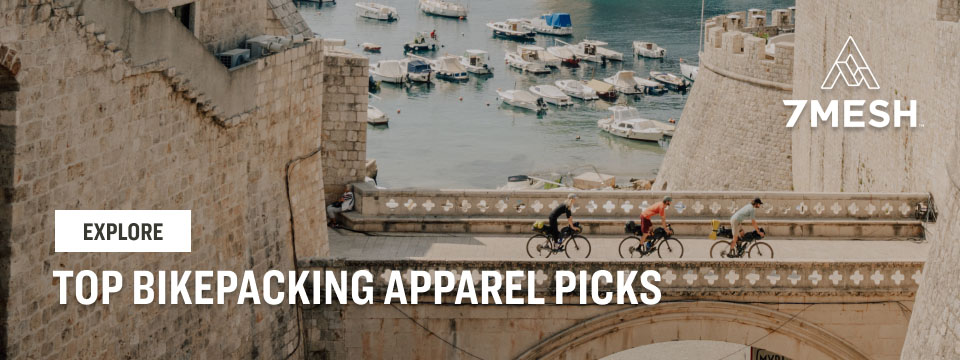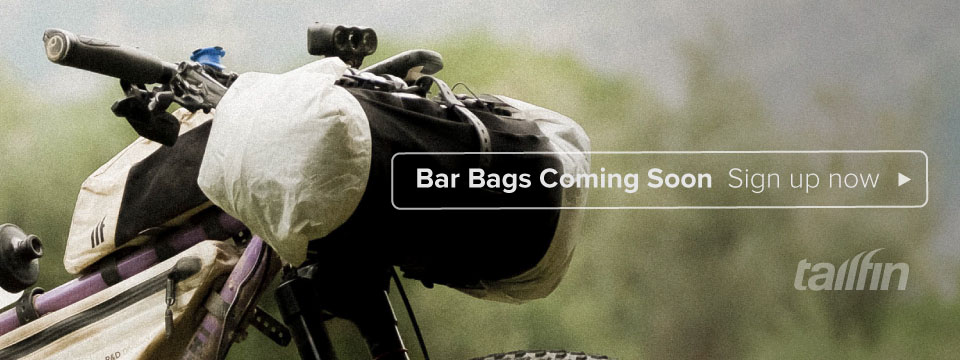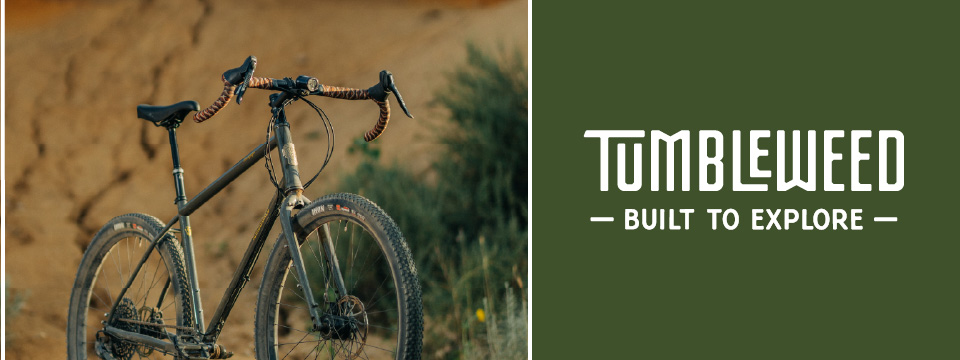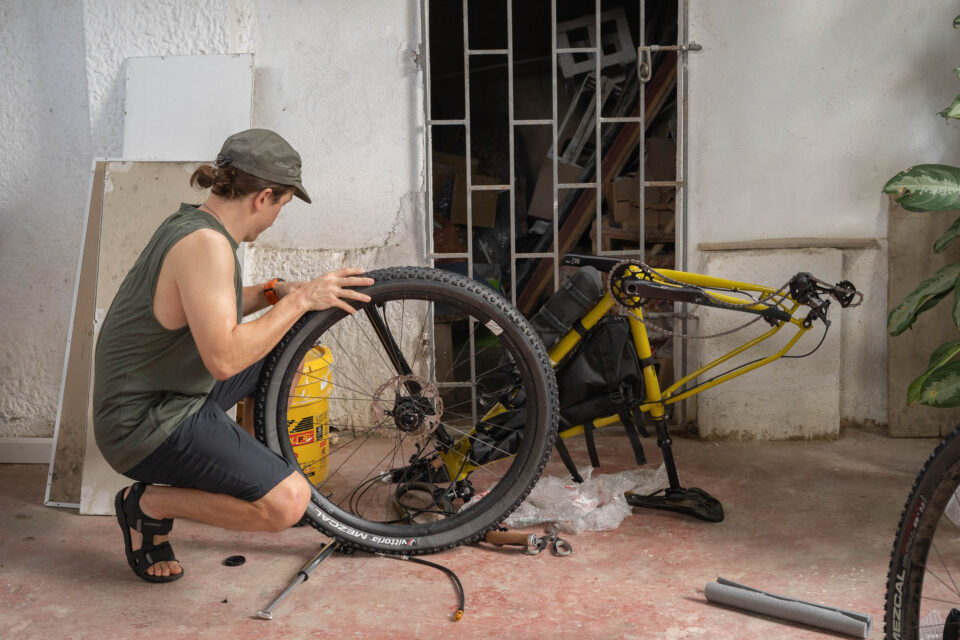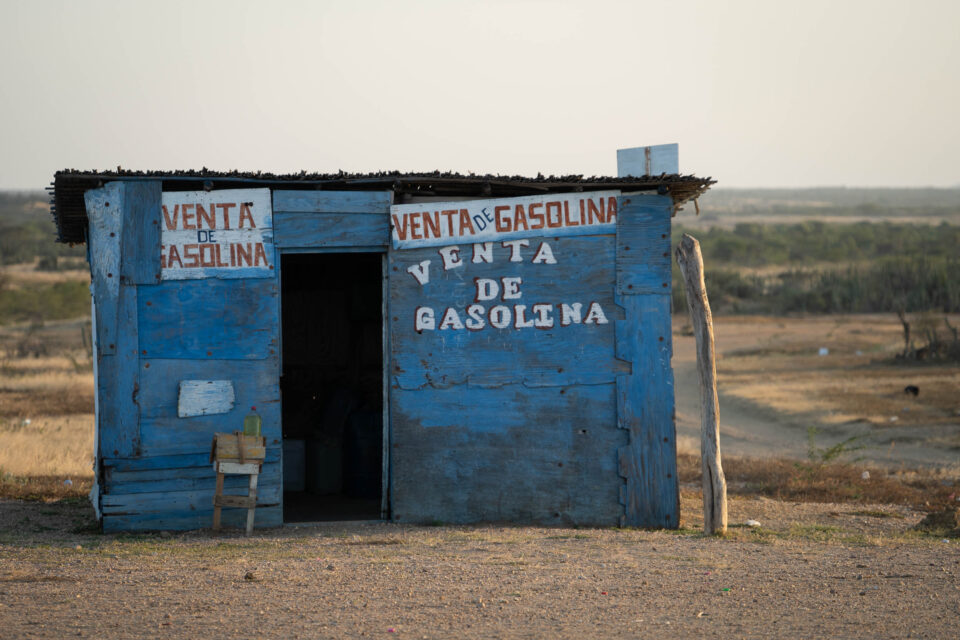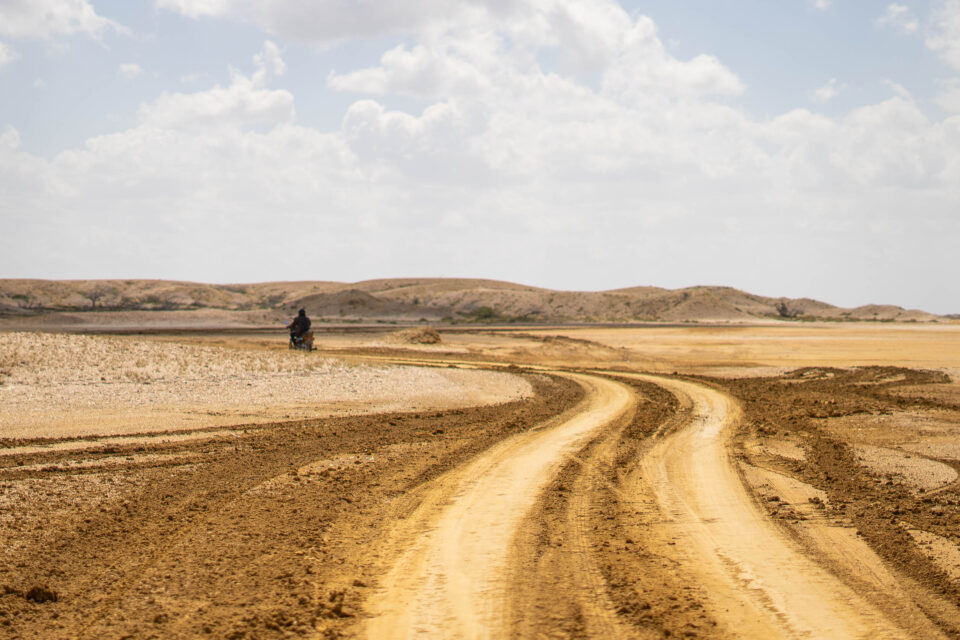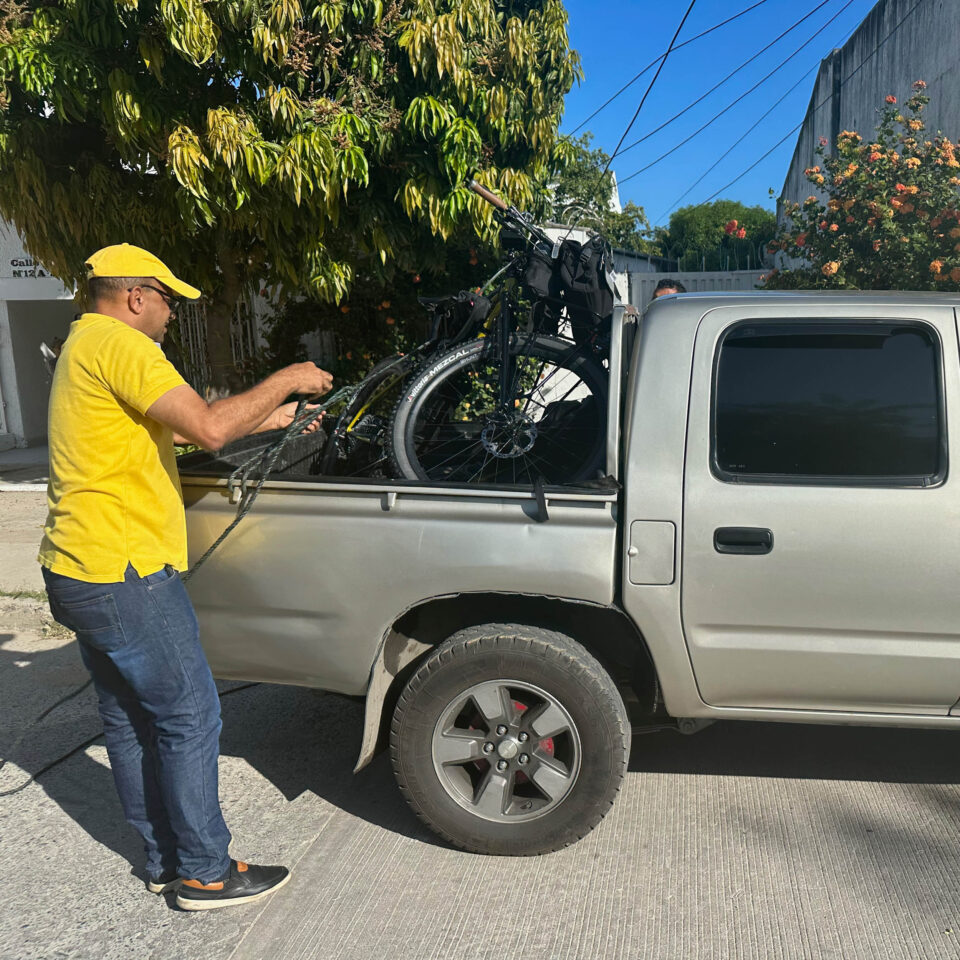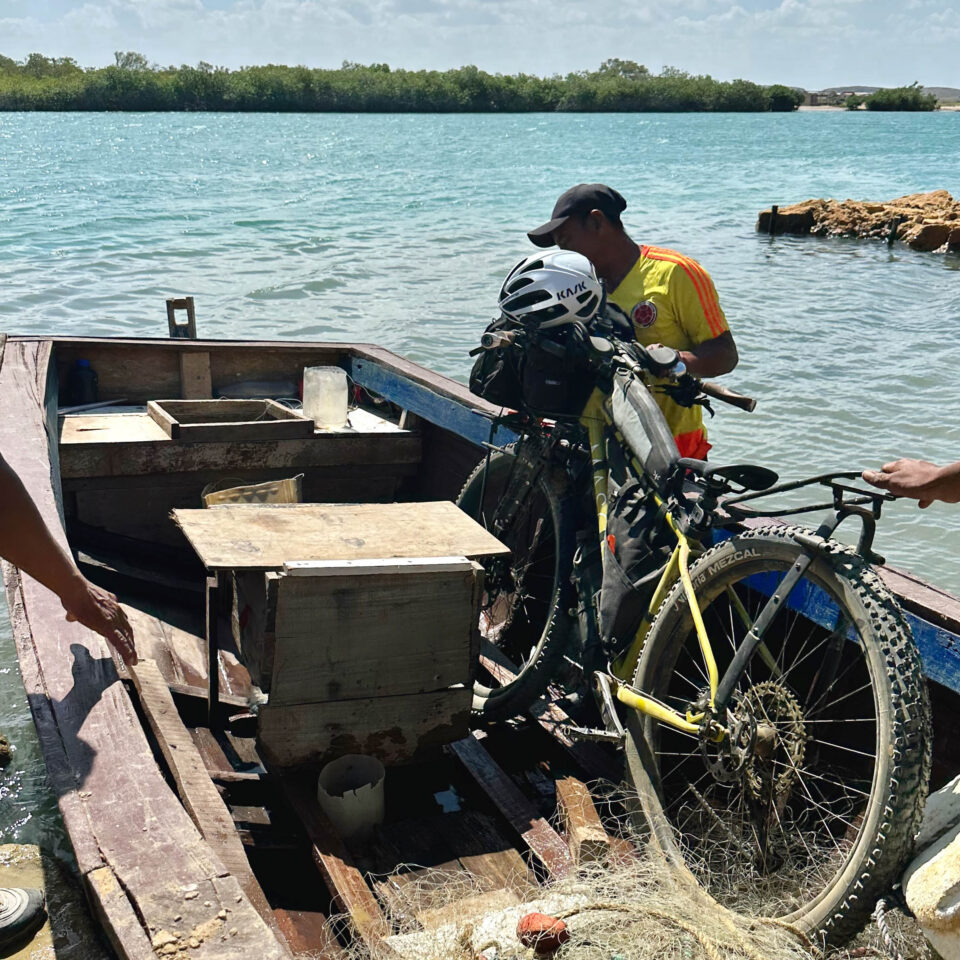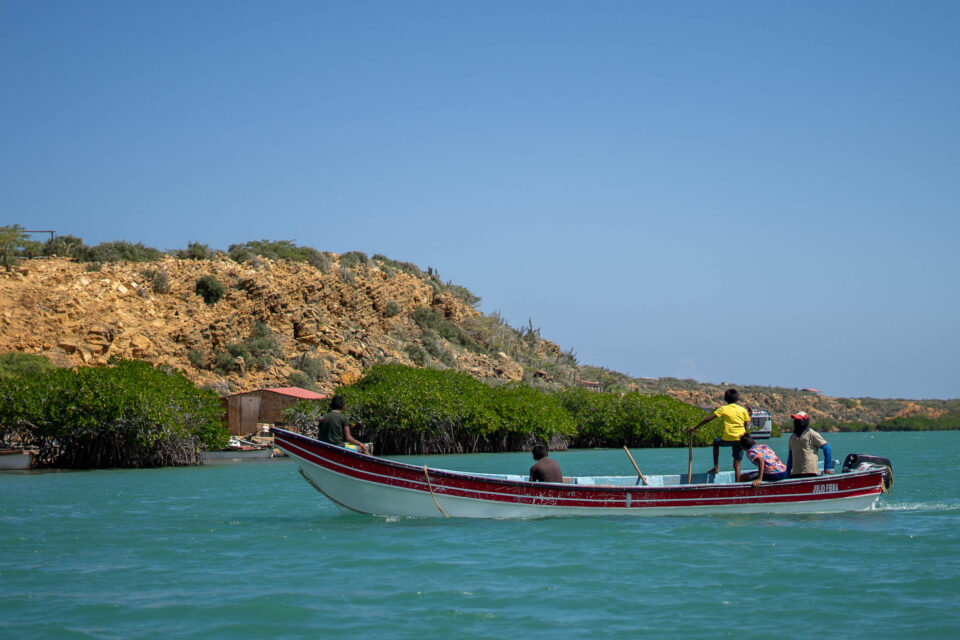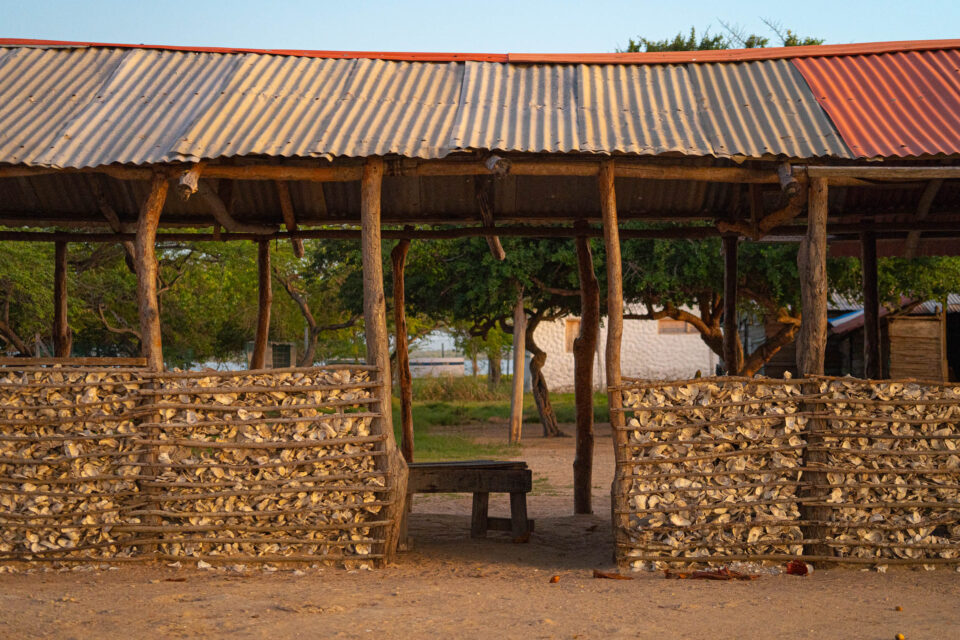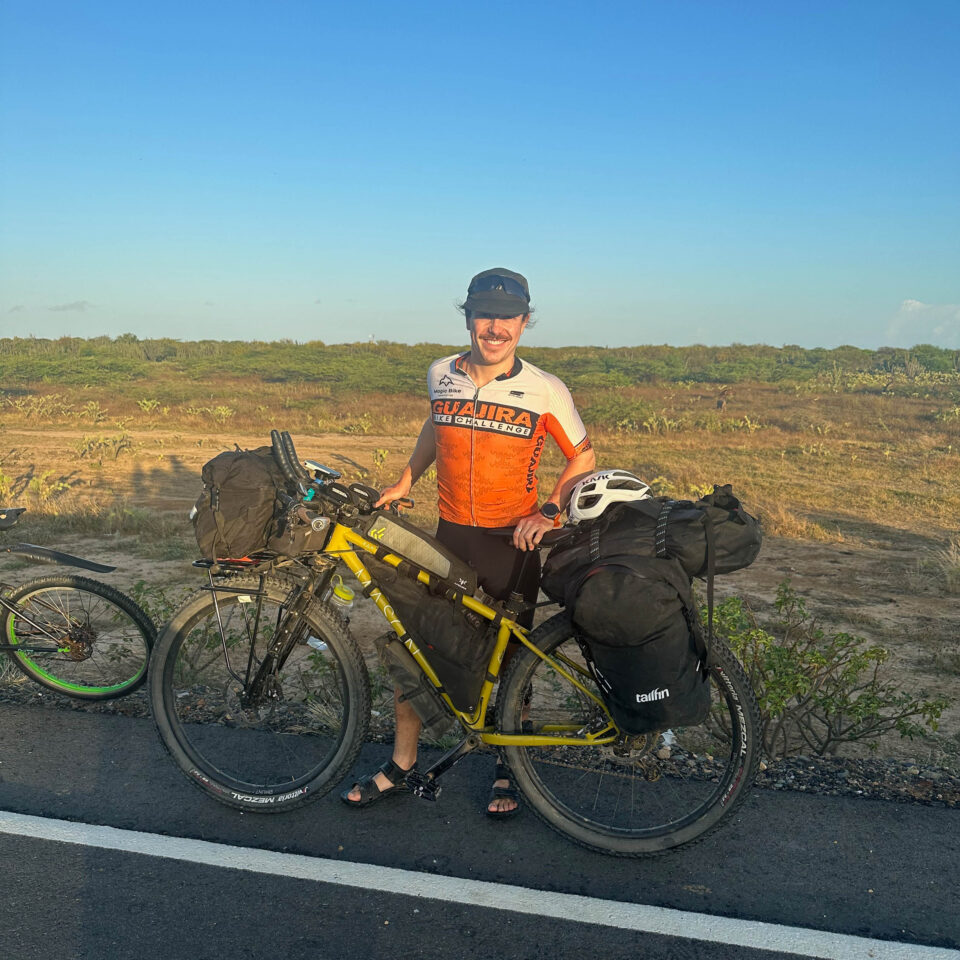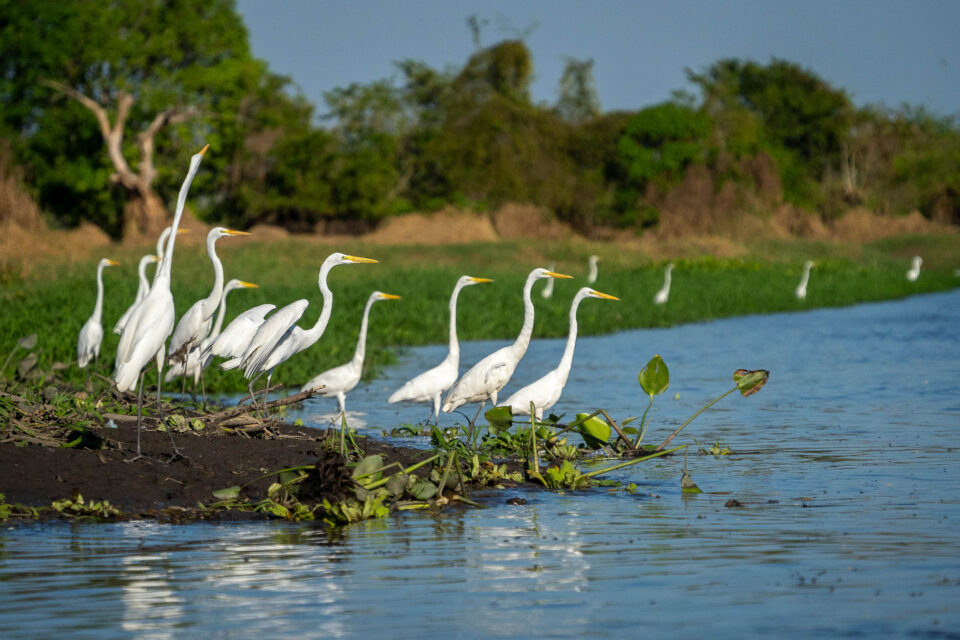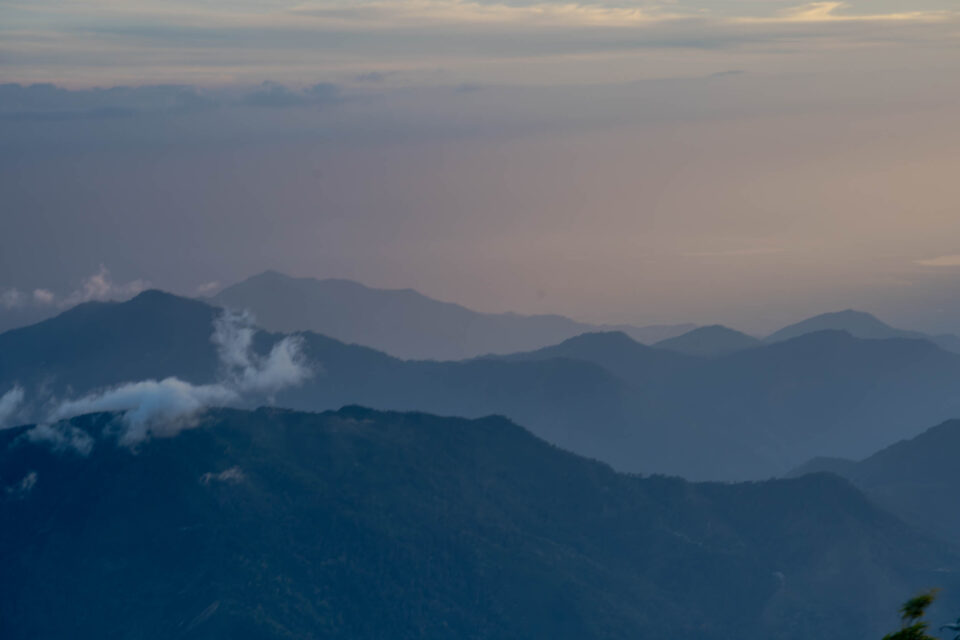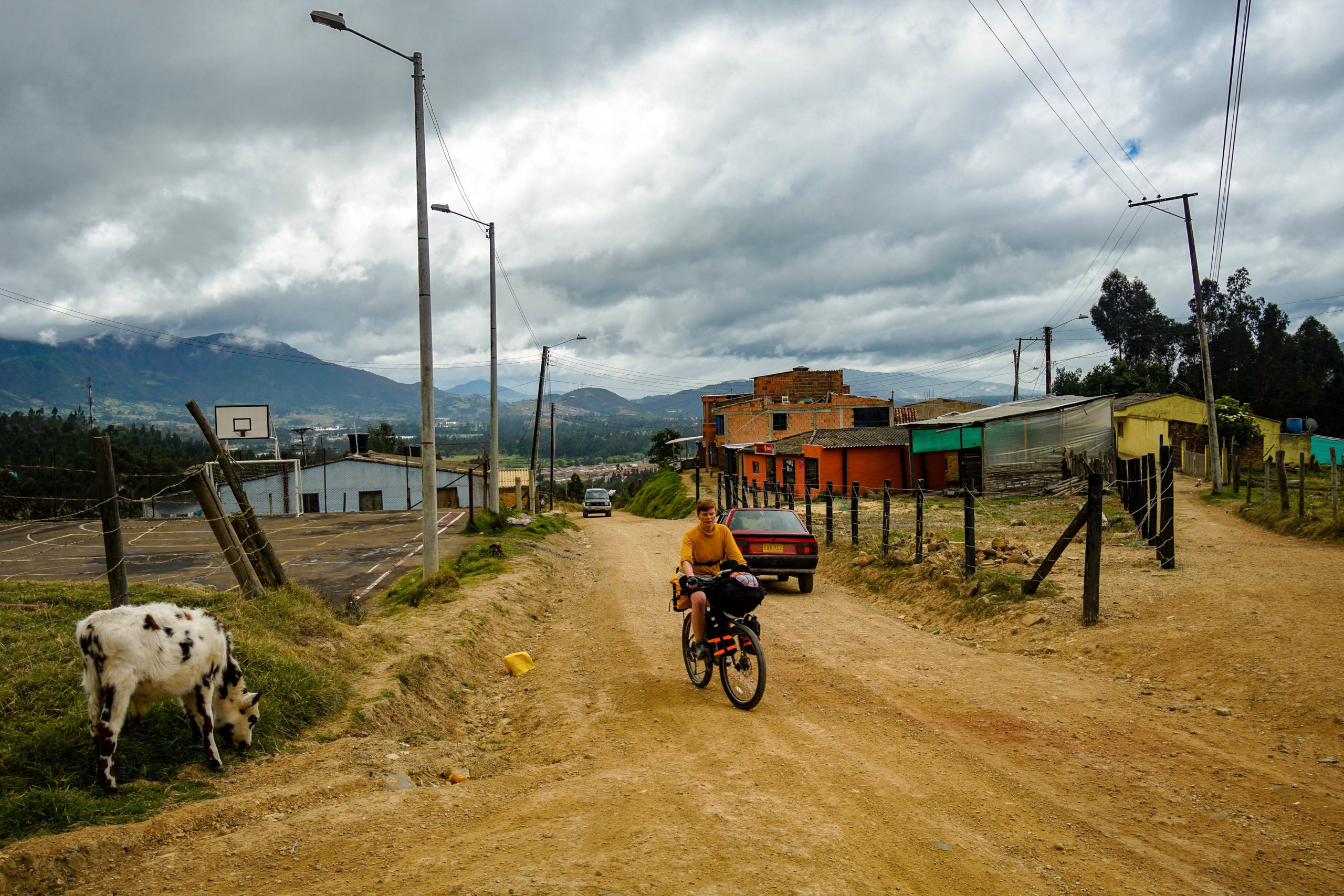Baptism of Fire: Bikepacking the La Guajira Desert
Share This
In January, Joe Sasada embarked on a solo dirt tour spanning the length of South America from Colombia to Patagonia. Having spent years dreaming and months preparing, his careful plans went out the window as soon as he started pedaling through the La Guajira Desert. Find his story of trying to find momentum in a lesser-known corner of the continent here…
Words and photos by Joe Sasada
According to the collective wisdom of generations of bike tourers ahead of me, the hardest part of the journey is the beginning. To sum up the courage to get going and arrange your life logistics. “Don’t worry too much about your kit or route selection,” they say. Just commit to it and go. Adventure awaits, the sunrises, the sunsets, and the kindness of complete strangers will restore your faith in humanity.
Years of dreaming, months of planning, and now mere hours into my first day of riding, I was sat in a thorn bush in the middle of the La Guajira Desert, a breathtakingly desolate but troubled region home to the Wayuu people who are indigenous to this region of northern Colombia and Venezuela. As I desperately sought shade from the intense midday sun, I cursed whatever wisdom I thought I had assimilated and wondered if any of it was true. This was much harder than the planning phase. Saddle sores, heat exhaustion, and miles of deep sand had not factored into my colourful excel spreadsheet; I was learning the hard way that no amount of planning is a substitute for experience.
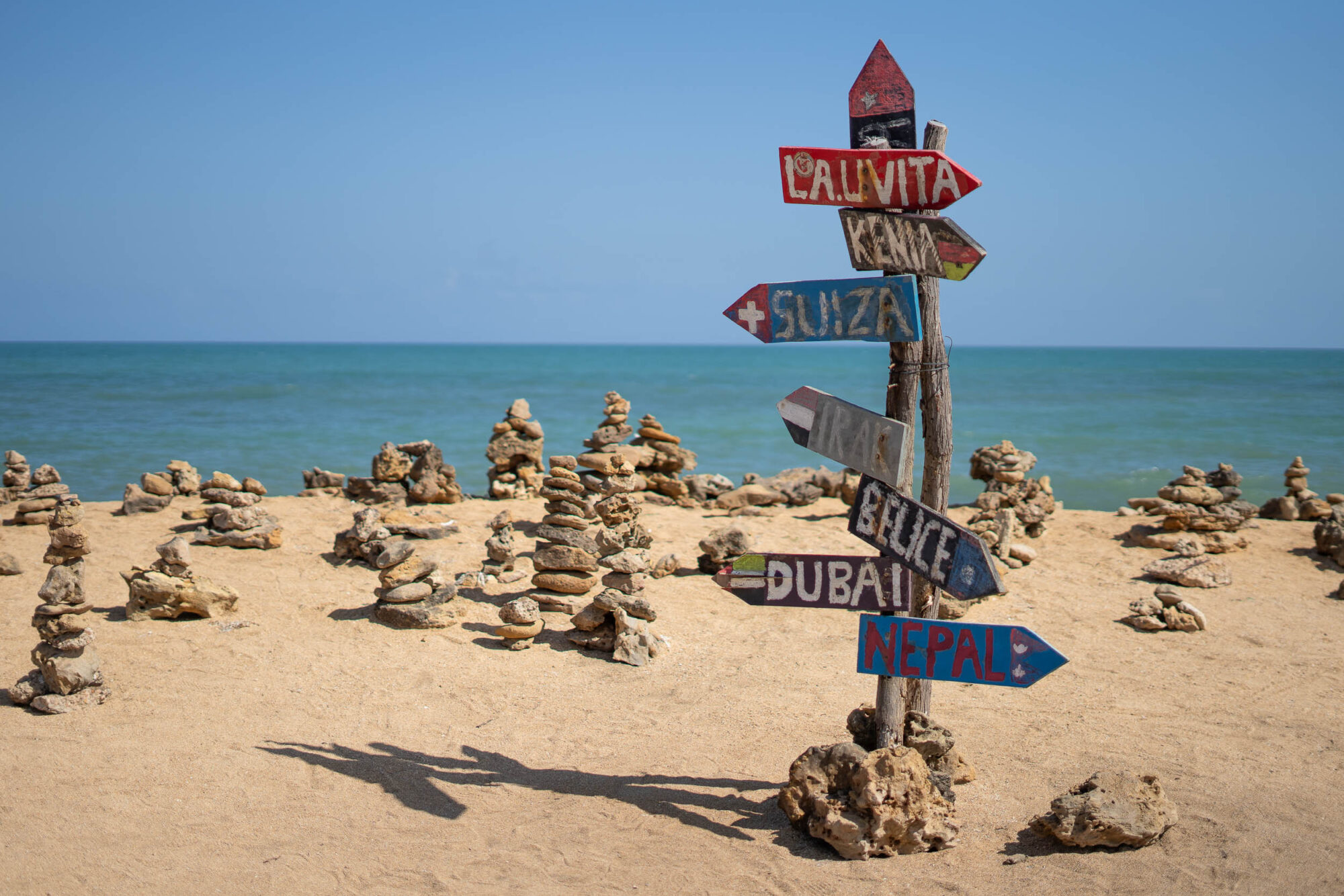
Seeing my predicament, my guide Cumate (guides are an unfortunate necessity for non-Wayuu outsiders in this part of the country) smiled at me with a mixture of kindness and bemusement. Earlier, when he had asked why I wanted to begin my journey at Punta Gallinas, the most northern headland of the South American continent, I attempted to explain in broken Spanish that if I were to cycle from one end to the other, I simply must start right at the top. I discovered in subsequent conversations with fellow tourers that this mindset was symptomatic of EFI Syndrome. Every Fucking Inch. It was not meant complimentarily. At that stage, all I knew was that my brain wouldn’t compute the idea of starting anywhere else. The road ahead has since taught me a few lessons in humility.
Rewinding several days, it was not a foregone conclusion that I would reach Punta Gallinas, “Chicken Point.” Unanimous feedback from the locals of Riohacha, the capital city of the La Guajira region, was that it would be madness to ride my bike through the desert. The Wayuu would rob me, steal my bike, and probably kill me before I had crossed a single state, let alone traversed the length of the continent.
Building my bike in the hostel lobby, I considered the risks and rewards of the situation. What was it about my psychology that required me to begin there? As if the achievement wouldn’t count if 15,000 kilometres later I arrived in Ushuaia, having begun nearly at the top of Colombia. I didn’t like the sound of death-by-bike-robbery, even if I considered the idea that death would probably be preferable to the embarrassment of failure so early. I also didn’t particularly like the sound of the Wayuu people. They sounded scary.
At that moment, in the first of many serendipitous moments, a news bulletin appeared on the TV. A mountain bike race, La Guajira Bike Challenge, would be staged around the desert a few weeks later. Within an hour, after a flurry of instagram messages exchanged with the organisers, I had the contact number of José, a local Wayuu guide, “the bike guy” of La Guajira. If the coming days in the desert represented a baptism of fire at the beginning of my journey, then José would be my angel of deliverance. And all the warnings about the Wayuu people would be proved wrong.
A plan was hatched. By luck, José, who lives in Manaure, a seaside town just north of Riohacha, was in the desert at that moment, recce-ing the final race route. If I could get to a town called Cabo de la Vela, “Cape of the Wind,” we could meet and he would arrange something for me.
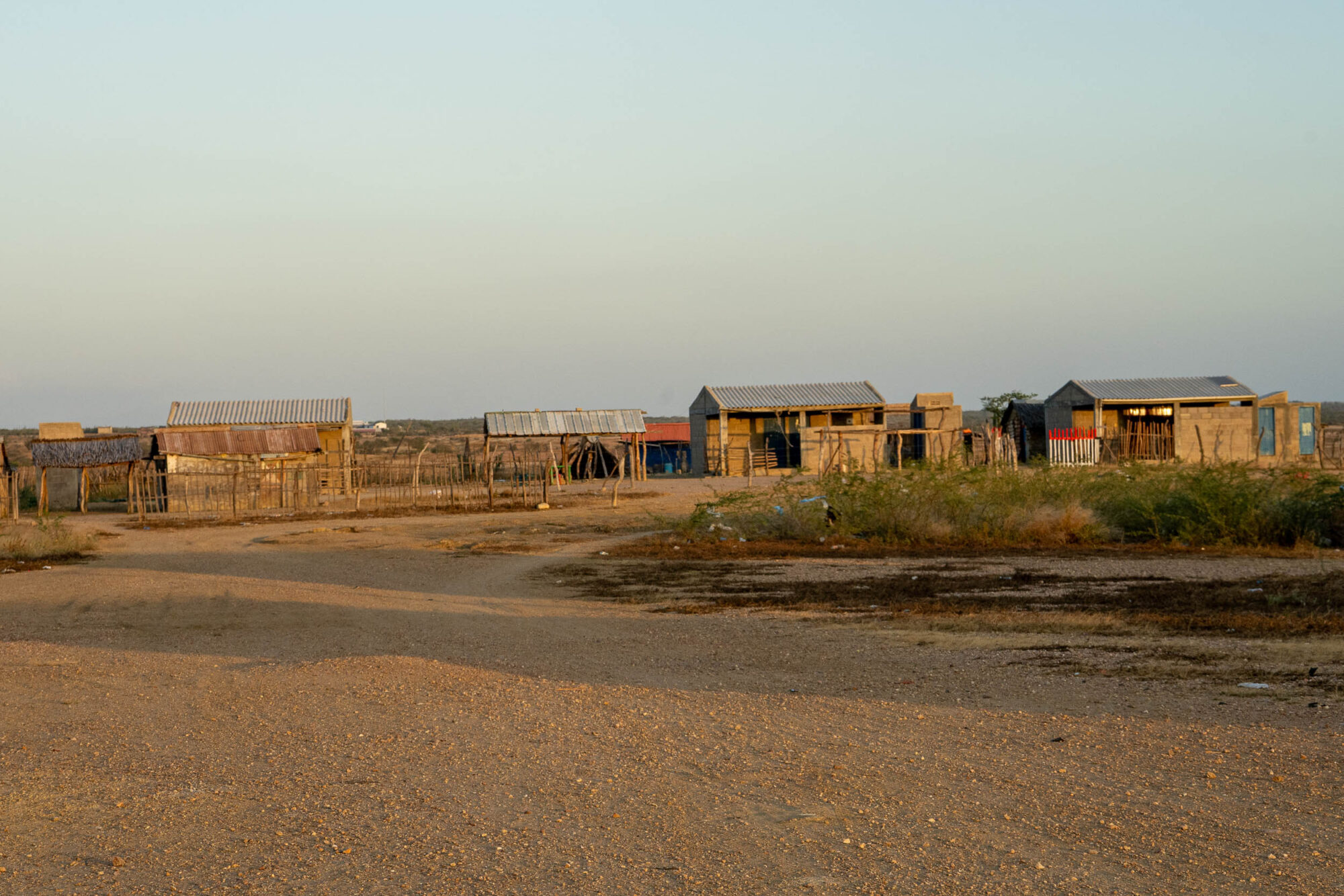
At this point, some context around the Wayuu people and the Guajira topography is important. La Guajira is a semi-autonomous desert region straddling the northern border between Colombia and Venezuela. The idea of the nation-state feels remote here, with Indigenous people having lived a nomadic existence for millennia before the words “Colombia” or “Venezuela” came into parlance.
The Wayuu are known as “the people of sun, sand, and wind,” and they endure many environmental hardships. Days are spent sheltering from the sun, and sandstorms caused by the constant strong winds are a regular occurrence. Socio-economically, the region is highly impoverished and largely neglected by both governments. Poverty and violence are rife, as is food and water insecurity, all of which has been exacerbated by climate change, political turmoil in Venezuela, and the pandemic. Given the nature of the frontier between the two countries, it’s a smuggling hotspot for drugs and illegal trade in tobacco and alcohol. The night I arrived, a tourist bus was robbed at gunpoint.
Not surprising then, that the advice was to stay clear. But I felt the coincidence of the TV advert was a good omen for my prospects. The route to Cabo de la Vela was an adventure all by itself. I loaded my bike onto the back of a reconditioned WWII jeep that had no seat belts, a cracked windscreen, and a driver who was drinking a beer at 10 a.m. Journeying further into the desert, I began to understand the earlier conversations. I had felt Riohacha was a bit rough around the edges, but this was a different thing. Sadly, the poverty there is more extreme than anything else I’ve since experienced on the continent.
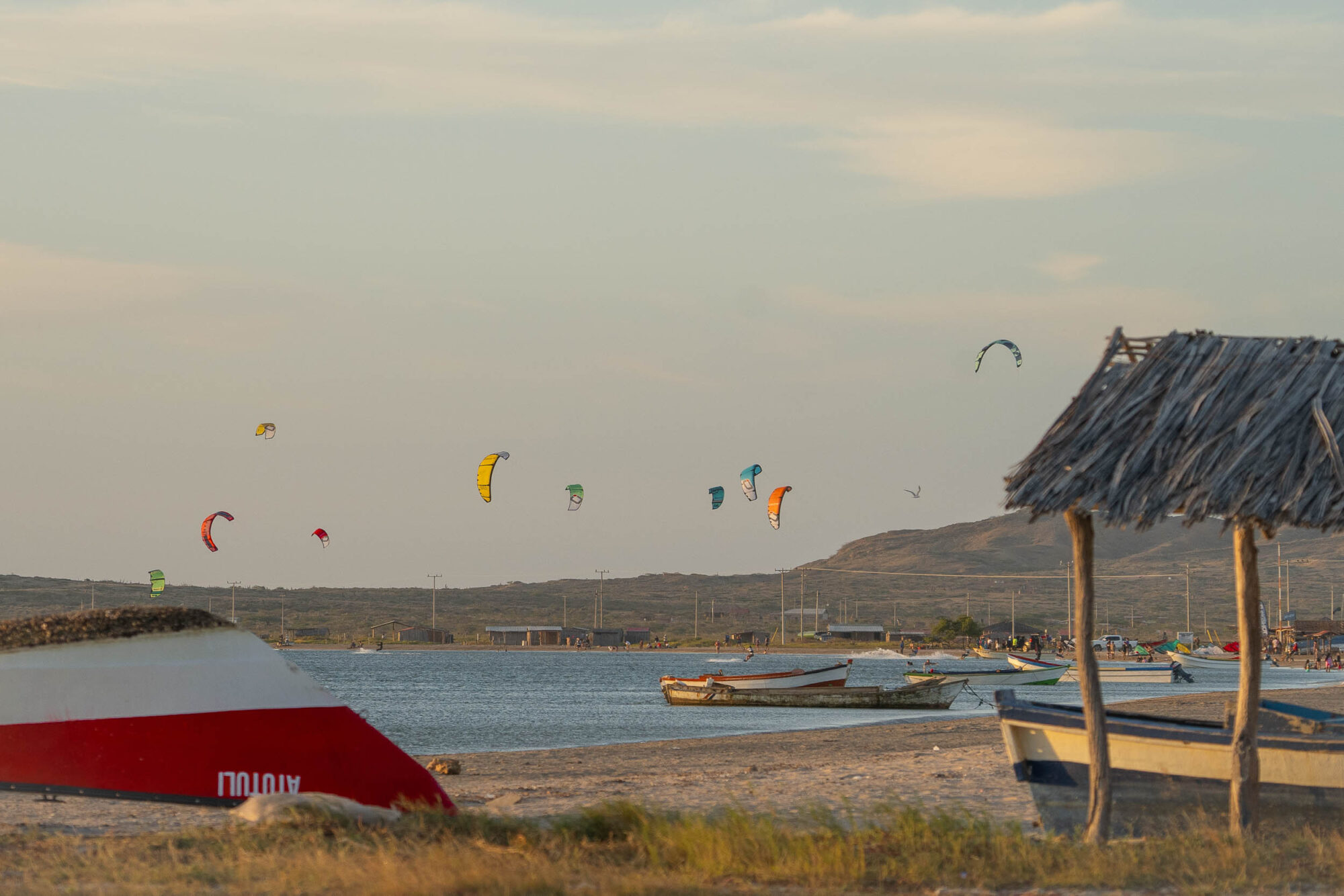
We reached the seaside village of Cabo de La Vela, a kite-surfing hotspot and the only place around with any kind of tourist infrastructure. Despite the roaring winds, the azure-coloured sea is completely calm, and the sun sets into it seemingly for hours. It is an utterly beautiful place and a perfect desert oasis for my final preparations.
Meeting up with José, I am ashamed to admit I was still on red alert. “The Wayuu were not to be trusted,” I had been told, and they just wanted my money. My Spanish level and his strong Wayuu dialect made for a tricky conversation, but I got the jist and generally good vibes. Yes, I needed a guide, it would be too dangerous without a local Wayuu companion. He wanted to ride with me himself but couldn’t due to pre-race commitments. Instead, his friends Cumate and Emiliano would accompany me, and they told me to be ready at 4:30 a.m. the following day.
Strapping my as-yet-unridden-bike—my home for the next year—to a wooden pallet on the back of Emiliano’s tiny moto in the middle of the night, I again questioned my life choices. As we journeyed further north through the darkness, I could see nothing but the shadows of cacti as we zoomed along. The sky transitioned from dark blue to orange to yellow before the most spectacular sunrise I’ve seen.
The final stretch to Punta Gallinas necessitated a short boat ride across a lagoon, from where there was around a five-kilometre stretch of riding north to reach the very top. Although it was only 9 a.m., I soon felt the heat, which combined with the deep sands along the coast to sap my energy. I hadn’t even reached the start line yet, and I was already cooked.
The sand dunes hit the ocean at Punta Gallinas, and the continent ended. Or in my case, began. It only took two planes, two 4x4s, a motorbike, and a boat ride to get there. There’s little there save for a derelict concrete building and a radio mast. After a cursory few moments of reflection and some obligatory photos, we cracked on. It felt great to be making the first kilometres southbound. It was even better once I realised that a ripping north-south headwind explained why the final northbound stretch had been so tough. I was on cloud nine at the peak of an impending emotional rollercoaster. I felt immense gratitude and satisfaction in the life choices I had made to get there. I also felt pride and relief to finally get going after so long.
The route was stunning, passing through cactus-lined tracks, through open plains, and around salt flat lagoons. All the while, I followed Cumate on his moto on the horizon. My bike, a customised Mason RAW rigid mountain bike, was handling well on the tricky terrain, and I thanked myself for choosing 2.6-inch tubeless tyres.
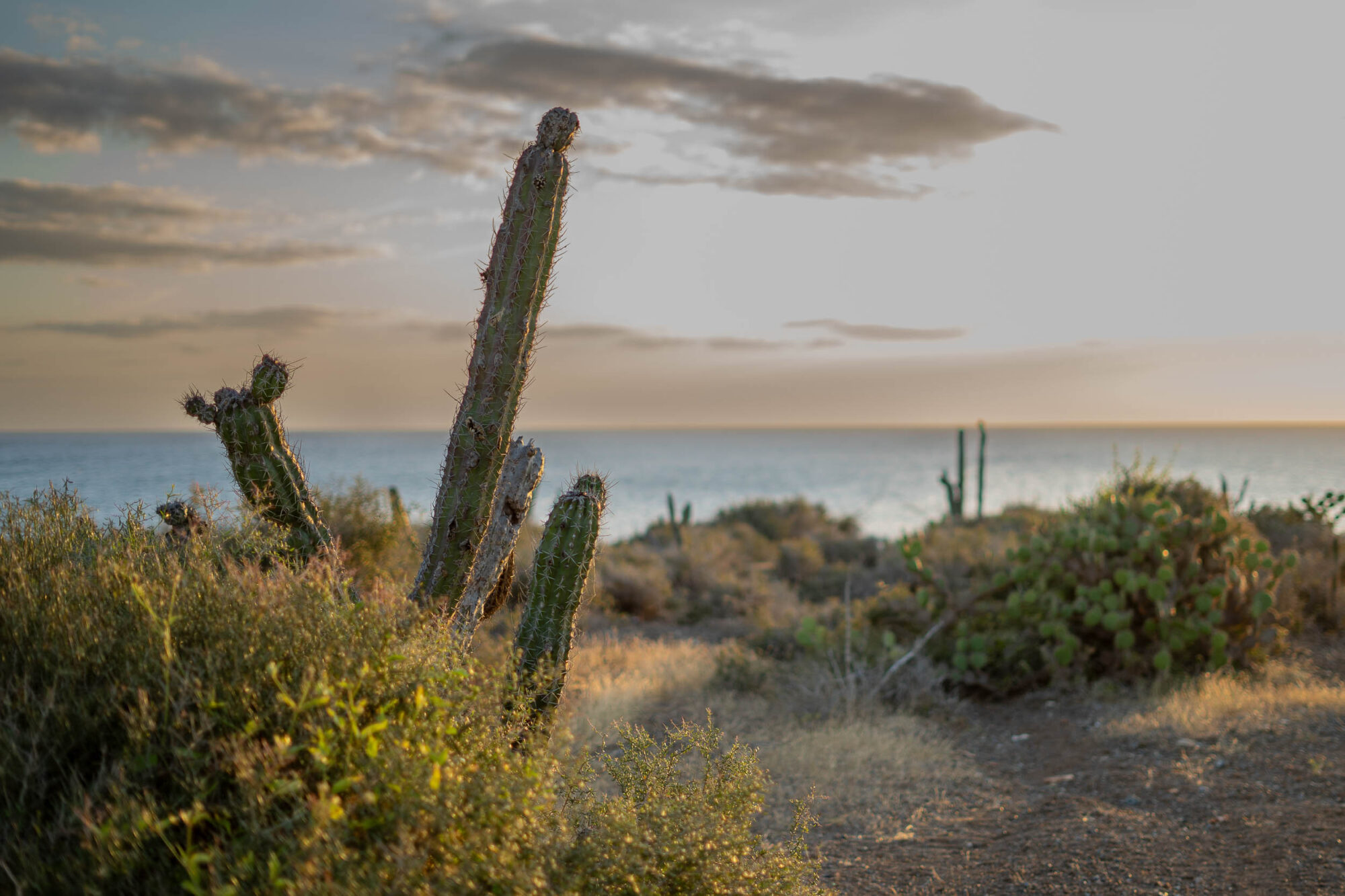
Fast-forward a few hours through the afternoon sun, sat in that thorn bush, I had ridden that rollercoaster all the way down. I had been broken by the alternating ass-destroying washboard and leg-sapping sand. Blisters had appeared on parts of my body where I didn’t even know it was possible. I contemplated whether I preferred a headwind, at least to provide some relief from the heat. I had quickly learned why the Wayuu are called the people of the sun, sand, and wind. How could I reach Ushuaia if I couldn’t even hack one day?
In the end, it was only a 60-kilometre day, but I was wrecked by the time we reached the village of Pachaca, where José had arranged for me to stay with his cousins. It was here that the true reality of life for the Wayuu hit home. “Village” is an overstatement; it was a collection of concrete shacks with no running water or fresh food sources. Water is collected via an ingenious network of rooftop aquaducts that channel condensation from corrugated iron roofs into underground pits for storage.
As is often the case, those with the least share the most. I was offered some precious water in a bucket to clean myself. Dinner consisted of stale empanadas and tinned frankfurters. I craved some fresh produce, but that doesn’t exist there. The evening was spent playing games with the kids, who have next to nothing yet are somehow so joyful. It was a truly special moment. They proudly showed me their ancient bikes, and we raced around the yard. Falling asleep in my tent that night, bruised and battered, I watched the bright stars above and had to pinch myself about the day I had experienced.
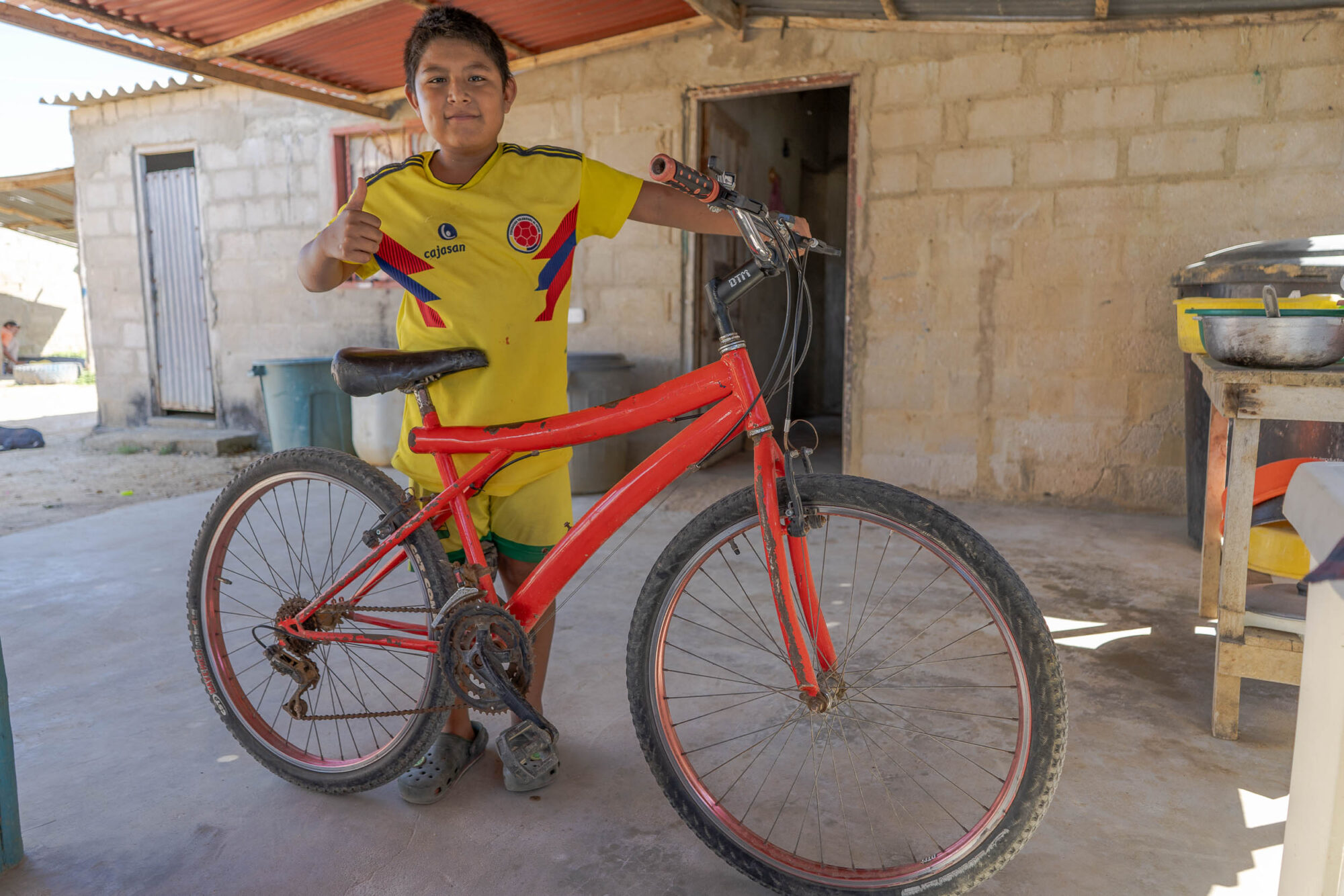
The following days out of the desert were easier but no less eventful. I awoke to an ant invasion in my tent and the sad realisation that I would be without my breakfast empanadas. Add ant bites to saddle sores and heat rash. It was an early lesson to always zip up your tent inner, which I haven’t yet forgotten. Cumate guided me another 30 kilometres through the desert before we met up with José, who had already ridden his bike 70 kilometres that morning to meet me at the end of the highway that connects the Upper Guajira with the rest of the state. I enjoyed my first encounters with Colombian lorries and the acrid taste of the low-quality diesel they burn. All along the road, people greeted José, asking about the MTB race. It’s a big deal for them to have people visit—a boon for the local economy. He talked to me about Wayuu culture and his love for cycling. He proudly showed me his old five-speed MTB and bright pink team jersey—bright pink for the flamingos that live in Manaure, his home town. He is the leader of the team, which consists of five local cyclists.
I was a guest in José’s house that evening. He shares the small space with his two brothers and their families. His 11-year old nephew Isaak paraded me down the street as we went to buy supplies for dinner and told me he would be a celebrity for life for hosting a gringo. His 16-year old nephew Miguel worked fixing up his bike until the early hours, ready for the next morning when he and José insisted on riding with me out of the state. I think they did this both out of concern for my safety and the novelty of riding with a foreigner.
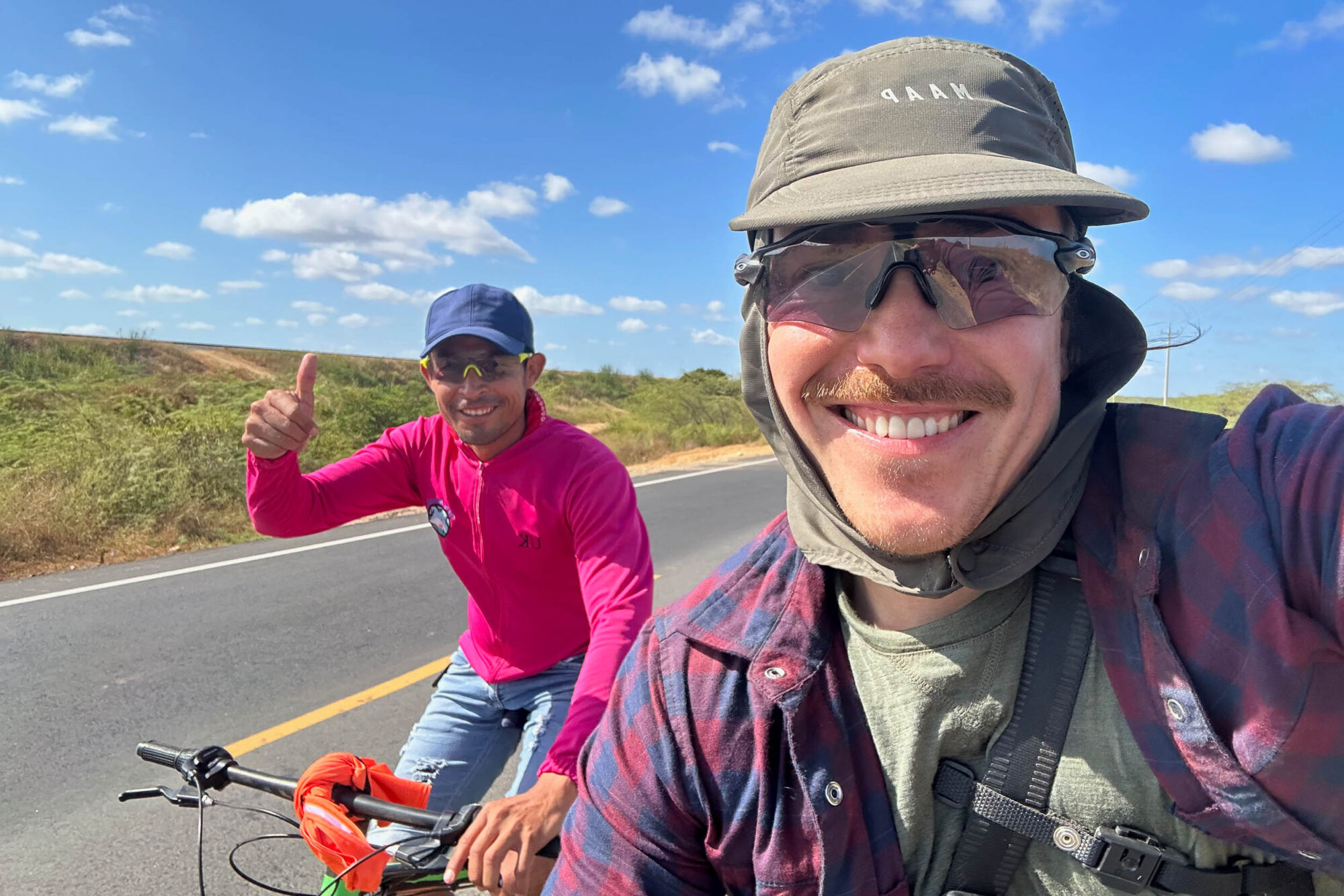
As we packed our bikes and got ready to leave, José presented me with his own La Guajira Bike Challenge riding jersey. This guy, who sleeps in a hammock in the yard because he doesn’t even have his own bedroom, gave me one of his most valued possessions. It moved me almost to tears. Not long after, we set off into the sunrise together as a three-man peloton.
Saying some emotional goodbyes, I tried to offer him some money for his services. He refused, saying that good payment would be to tell other cyclists that La Guajira is open to them and to share my story about my experience with the Wayuu people. I pedalled onwards out of the desert, following the coastline until I hit the Nevados de Santa Marta, where I first experienced the true scale of the Andes. It was shocking how quickly the topographical and socio-economic landscape changed upon leaving La Guajira region.
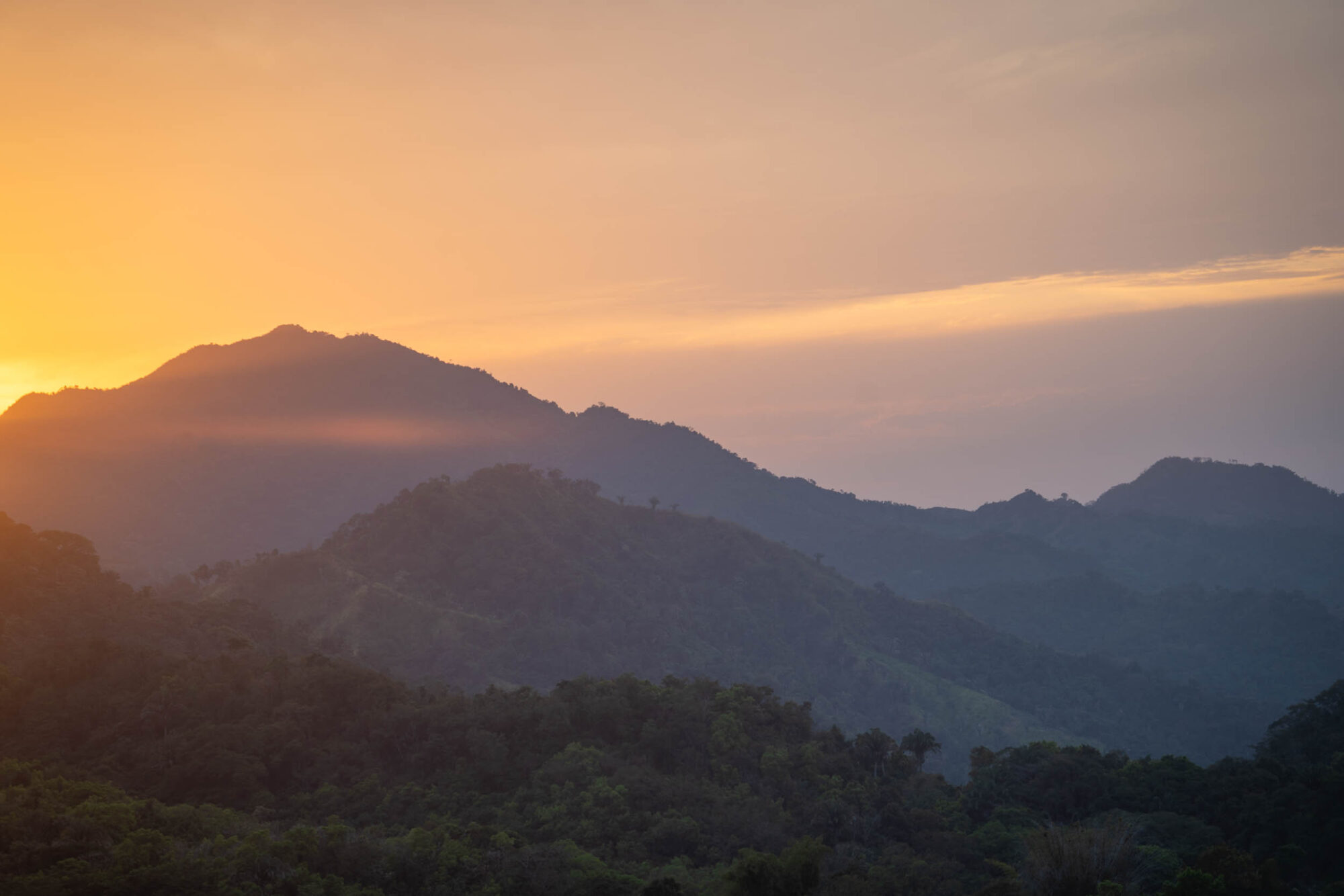
Six months and several thousand kilometres later into my journey, I look back at those early days in the desert as some of the most challenging but rewarding of the journey so far. The collective wisdom was probably right: maybe the hardest part is the starting. The resilience forged in the furnace of that desert heat has helped me power over many a mountain since then. And as for my faith in humanity? The kindness shown to me by José and his extended Wayuu family certainly restored that. The power of bikes to bring together people from all walks of life never ceases to amaze me.
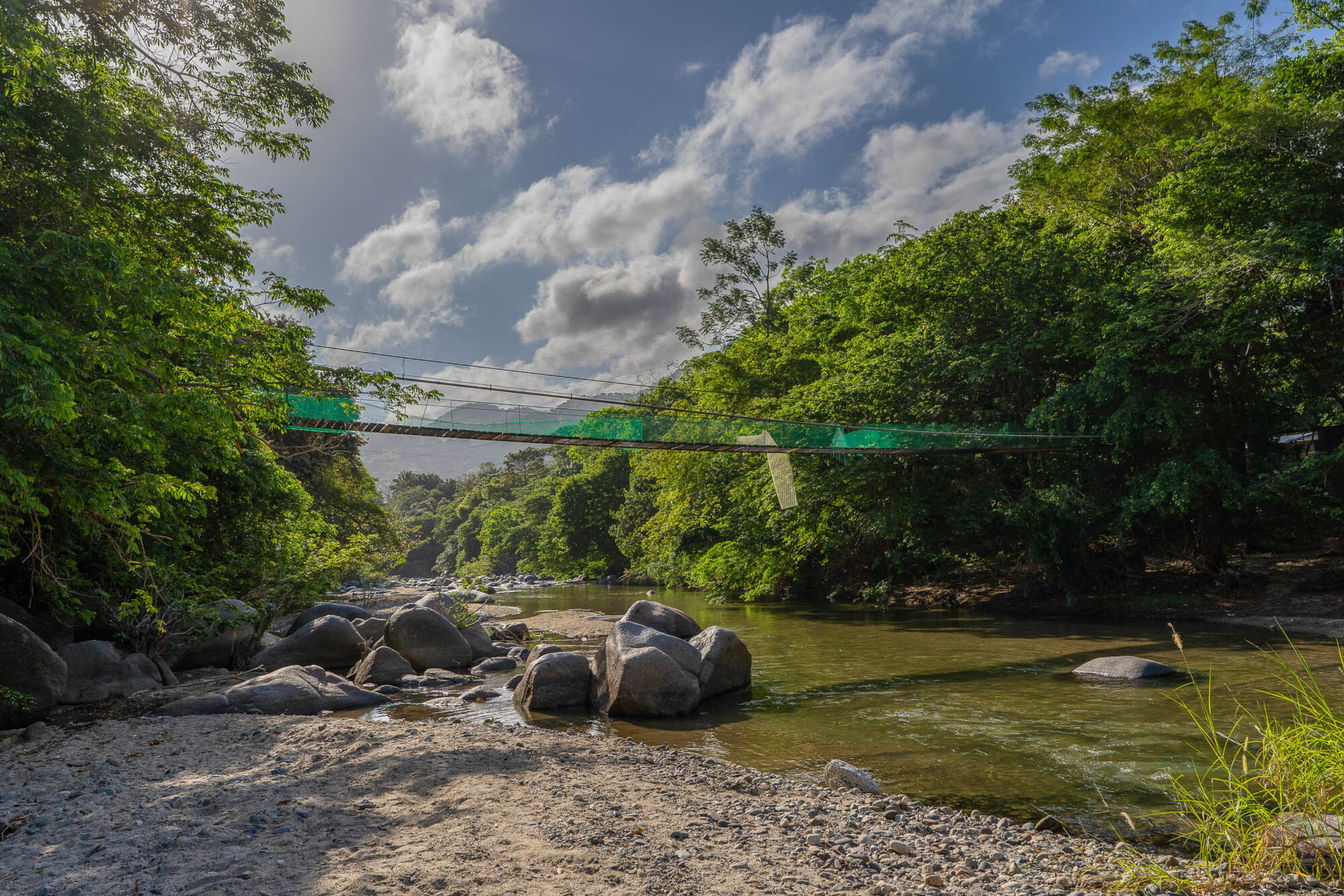
Further Reading
Make sure to dig into these related articles for more info...
Please keep the conversation civil, constructive, and inclusive, or your comment will be removed.







